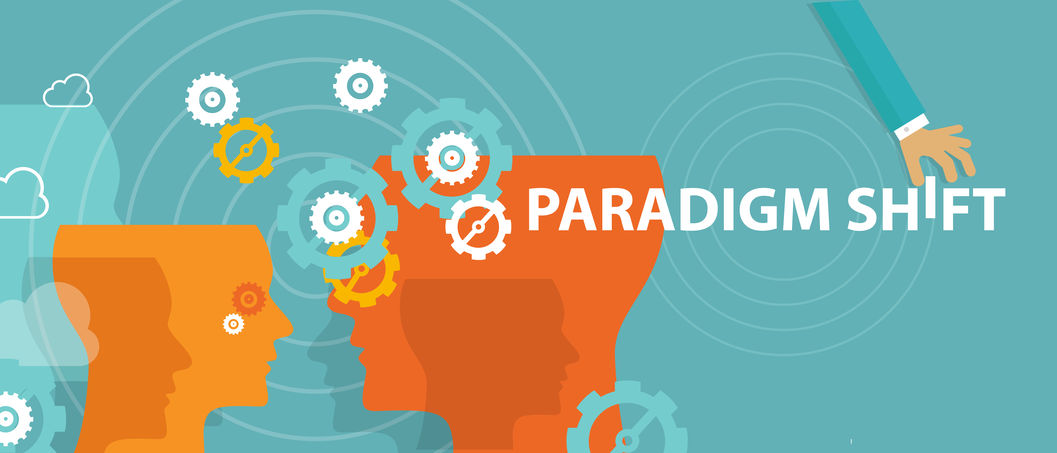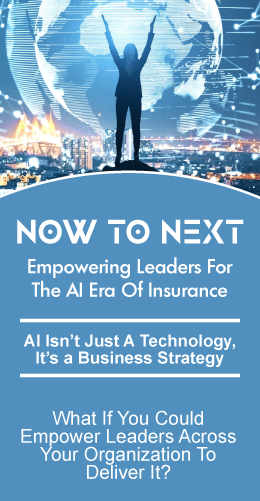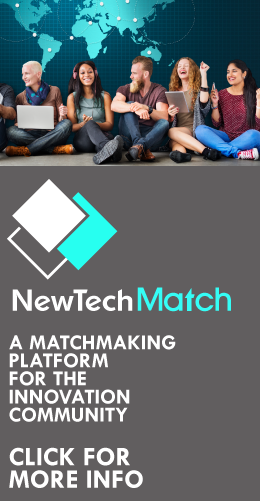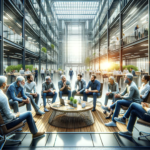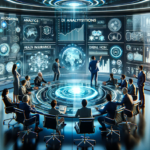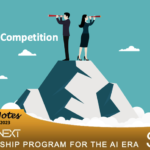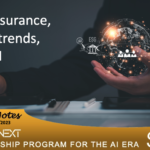At SVIA we sense a growing undercurrent of concern in carriers, tech vendors, and even some InsurTechs.
They are moving ahead with improvements across the value chain. They are upgrading everything from customer engagement to underwriting, to policy management and claims. They are even rolling out digital generation products. So, what’s the concern? The concern is that the work they are doing is being conceived of and done to stay competitive within the existing industry business model or paradigm. They fear a new paradigm is coming. And, they don’t have a strategic framework they can use to address it. Without that, it’s hard to develop strategies, products, and partnerships that will be competitive. So the magic question is where and how do they get started.
What’s a Paradigm Shift?
The following is inspired by a definition in Investopedia. A paradigm shift is a significant change in how a process is accomplished. It can be triggered as an example by new technology that radically alters how things are achieved and the time and cost it takes to accomplish them. That shift can eliminate or create jobs, departments, companies, and even industries. For example, the internet created a paradigm shift in the way business is conducted.
Reverse Engineering the Future
I was an early Apple employee and worked for Steve Jobs as a product manager. One of the things Steve was good at and encouraged (demanded) us to do as we developed strategies and product concepts was to reverse engineer the future. That thinking changed the world.
Examples of Paradigm Shifts
Steve’s thinking enabled Apple to drive significant paradigm shifts in computing, printing, photography, music distribution, and mobile phone technology. It also changed how applications were designed developed and distributed. Another example is what Intuit did with Quicken and TurboTax. And, the way Salesforce opened the door to cloud and SaaS computing for enterprise software and how Google and its predecessors turned the media and ad world on its head.
Every one of those companies changed the way the world worked. They did it by harnessing technology to create new categories of products and services. Those innovations made it easier for people to accomplish things they valued. Every one of those companies redefined and emerged as the winner in the industries they addressed and disrupted.
That approach to thinking allowed Apple and others to move beyond the existing paradigm and offered a valuable framework from which to assess alternative future scenarios. It gave us the chance to project the future. It enabled us to see into the world that creative minds, emerging technologies, and Moore’s Law unlocked. A world in which new, more effective ways of accomplishing things changed everything. Mostly it gave us a plan. With that plan, we could define new products, processes, industry models, and companies. Things that would not just be valuable in that future paradigm, but also help bring it about.
Drivers Behind the Next Paradigm
The forces driving the next paradigm will impact far more than insurance. They will and are changing our entire economy and society as well. So let’s start with those more significant themes first.
Faster, More Connected and Increasingly Intelligent Technology
One of the major forces driving change is Moore’s Law. It continually drives ever faster, less expensive, and more powerful, connected, and intelligent computing capability. A capability integrated into our computers, mobile devices, networking, homes, appliances, vehicles, products we buy, the clothes we wear and even into our bodies. It’s creating a world in which we can increasingly connect anything and everything together into vast, data-rich, intelligent ecosystems. Ecosystems of devices, data, and solutions designed to sense our location, status, the context we are operating in, our needs, the environment, risks, opportunities and community around us and to assimilate and analyze that complex array of information. Ecosystems that will combine real-time information with information from our past and those of others like us. Systems that then anticipate and act on our behalf. Systems that suggest and reward actions we and stakeholders in our endeavors take that will help us more effectively achieve our goals.
Societal Acceptance and Demand for the New Paradigm
The next force is society’s acceptance, or more accurately demand that the new paradigm supports them. They will expect the things they buy, the services they use, the facilities and environments they live work and play within support that paradigm. The car that adjusts its seating when I enter. The Uber car that is playing my song list when I arrive. The hotel room I don’t need to check in at the front desk to enter. The Intelligent house. One that can detect whether the person at the front door is someone I know and trust. One that recognizes that my water heater needs maintenance or repair. And an insurance service that secures and pays for the service or replacement without my involvement. Travel insurance that knows before I do that my flight is late. That automatically seeks alternative fight options and offers them to me. One that handles the rebooking, secures overnight accommodations for me and offsets the fees with my travel insurance payout.
Global Trends
Beyond technology, there are other global forces at work, driving the new paradigm. Extreme weather events. Globalization of the economy. Urbanization and changing demographics of populations. Increased life spans. Growing wealth and health gaps. The greening of the economy and lifestyles. Sharing of resources. The weaponization of technology. The rise in armed and cyber conflict. The impact of drugs and gangs on local, regional, national, and international communities and economies.
Those forces are shifting the entire world into a new paradigm. It will impact insurance customers and the insurance industry. If the current sector is to survive and thrive, it must move its thinking out of the existing paradigm. It must begin the work transforming its culture, strategy, business models, products, infrastructure, investments, and partnerships into those that will be relevant and competitive in the coming paradigm.
Creating a Vision for the Future Insurance Paradigm Requires Stepping Out of the Current One.
The most critical starting point is to move your thinking out of the existing insurance paradigm. Doing so isn’t easy; it’s a process. Start by creating a vision for an economy and society powered by digitally enabled services.
For example, what if housing were a service you had ownership in that enabled you to move where you want when you want as your job and interests take you. You could change your subscription level as you wished or live in less expensive housing for most of the year and then winter or summer in more expensive places. Meal, transportation, and even entertainment packages, laundry, upkeep, and maintenance were part of the housing plan.
Or what if the risk inherent in a supply chain and the end products it produced were instantly transparent. What if participants could collectively place that risk into a marketplace. What if services that would mitigate that risk, including insurance, could be bound immediately into a robust integrated suite of services.
What will the insurance solutions look like for those scenarios? What would it take to implement them?
Start by developing a few scenarios. Then ask the question, what are the ecosystems, platforms, and services that would enable and create value in those scenarios and what insurance ecosystems, platforms, and services would enable that. What’s required from a strategy, infrastructure, and partnering perspective and business or product model standpoint to achieve that.
The net is to think about how a hyper-connected world of ecosystems, platforms, and services will look and work. How will they proactively increase our ability to achieve our life and business goals faster, less expensively, and more flexibly? Ask how insurance as a service could be bound to and interoperate with other services. Then develop alternative scenarios and a strategy that optimizes your ability to quickly pivot as it becomes clear which new paradigm will become the norm.
The Insurance Value Chain Impact: Possible Scenarios?
Next generations Insurance ecosystems and platforms will extend and contract the insurance value chain. They will break apart siloed processes and data sets and offer those capabilities and information back as interoperable streamlined components. They will simplify and reduce the cost and time of operations and activities. And the solutions within them will ultimately be composable in real time to understand and protect those we insure.
Customer engagement will be instant across multiple ecosystems based on the needs and circumstances of the insured and the environment in which they are operating. Engagement will be designed to create highly personalized value based on the lifestyle, stage, and circumstance of the insured, members of their family, and other stakeholders.
Products will become Interoperable, blended, insurance-as-a-service offerings. They will couple with other services offerings composited and personalized in real time using ecosystem data to support the achievement of the insured’s life and or business goals. Those services will flex to accommodate real-time changes in needs and risks and the stakeholders associated with them.
Data from the very front end of customer segmentation to underwriting to policy management to claims will flow throughout the ecosystem into the insurance value chain and will be combined with 3rd party and analytics. That data will likely be offered as a service anonymized as needed. It will be used to better meet and support the needs of the insured as well as improving operations.
Brokers and agents will be replaced in the commodity side of the business with intelligent agents that are certified much as brokers and agents are today. Many of these will evolve from the current aggregators and comparators. Those intelligent agents will also be offered as a service to insurers, brokers, and to organizations that want to integrate insurance into their offerings. For more complex insurance services, brokers and agents will have access to intelligent agents. Those agents will take over routine tasks and help keep the brokers and agents up to speed on the information they need to be effective. They will also support them in automating submissions and assessing the offers they get back.
Ecosystems and platforms will be created and deployed by a combination of tech giants, primary reinsurance or carrier groups and banks. Those systems will enable interoperability across ecosystems that are extended as a service upon which others can build products, platforms, companies, and ecosystems. We will see growth in large and boutique MGA’s that leverage the ecosystems and platforms offered by others. Insurance processes as globalized services that assess, underwrite, price risk, and detect and pay for the loss in real time. Ecosystem and services that give groups the ability to form in real time and self insure around a specific set of risks.
No one knows what paradigm shift scenario will play out or exactly how it will impact insurance and the value chain. What we do know is that it is coming and likely will take shape within the next ten years. Companies will be well served to undertake thought experiments like these that allow them to reverse engineer alternative futures. With that, they can then start to map out alternative scenarios and chart a course through them.
The New Insurance Paradigm: Faster, More Connected and Increasingly Intelligent
Here’s what I think is a highly probable scenario. Borrowing from what was said above, Insurance will be ever faster, less expensive, and more powerful, connected, and intelligent. It will be digitally integrated into our lives and business, mobile devices, networks, homes, appliances, vehicles, products we buy, the clothes we wear and even into our bodies. It will increasingly create value by connecting into vast, data-rich, intelligent ecosystems surrounding us. It will sense our location, status, the context we are operating in, our needs, the environment, risks, opportunities, and community around us. It will assimilate and analyze that complex array of information. It will anticipate and act on our behalf and suggest/reward actions. Actions that we and stakeholders in our endeavors take that will help us more effectively achieve our goals while reducing our risk.
It will become a suite of integrated real-time services. Services that identify, assess, and proactively work to predict, eliminate, or mitigate risks, decisions, and behaviors that pose threats to the achievement of the goals and outcomes for which we strive. It will do that by becoming an interactive component of the ecosystems surrounding and supporting us. It will do that for us individually and collectively. It will also do that for our families, businesses, communities, and nations through shared data and analytics that proactively make emerging risks transparent and actionable at those levels. It might be detecting a new health threat, identifying optimal treatments, and mobilizing the resources to address it. It might be identifying a widely used product or mechanical component whose malfunction causes harm or excessive repair cost. Or it might be projecting the impacts of extreme weather and providing recommendations and negotiating resources to mitigate that risk.
That future paradigm is coming. It isn’t arriving in a neatly bound and wrapped package. It’s coming in bits and pieces. Some ugly and odd at first, Some amazing in their elegance. Some in one country, others in another. But the internet, cloud computing, next-gen analytics, and machine learning make connecting those disparate pieces together easier every day. And the passion of entrepreneurs across the world to deliver the next world-changing paradigm just adds fuel to that fire. As William Gibson said, “The Future is already here – it’s just not evenly distributed”.
I love to hear your thoughts and alternative scenarios.
Mike Connor

